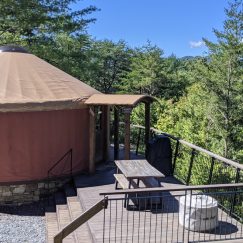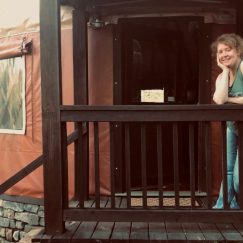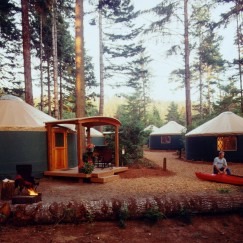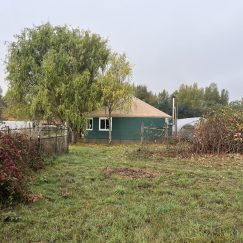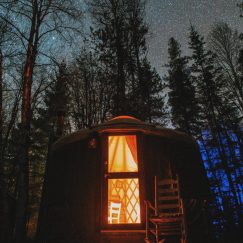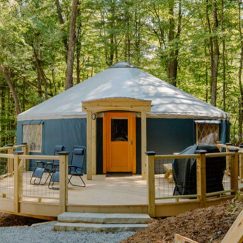Customer Spotlight: For Yurt-Curious Businesses, Treebones Resorts Has Answers
Big Sur, on California’s central coast, is practically synonymous with the natural beauty of the American west. And as John Handy, cofounder of Treebones Resort in Big Sur, explains, its stewards aim to keep it that way. “The residents of Big Sur have been careful to make sure it stays almost exactly the same as it was in the days of Jack Kerauac,” John says. “They’ve actually mandated that if you want to build a house or a road, those developments, with some exceptions, can’t be visible from Highway 1.”
It was within this well-preserved natural wonder that John and his wife Corrine bought, in 1987, the property that became Treebones Resort. Since then, Treebones has seen incredible success, and was even recently named one of the top 10 glamping sites by USA Today. Their investment in yurts has been central to their ability to deliver amazing glamping experiences while embodying the spirit of preservation that is the responsibility of all businesses and residents of Big Sur. Or, as John puts it: “We wanted to perch lightly on the land, to build on it without clearing it. Yurts really lend themselves to that.” Treebones bought their first Pacific Yurt in the late 1990’s and now has 16 – and counting – available to guests year-round.
Design Your Own Yurt in Our Yurt Builder.
With glamping operators everywhere increasingly curious about what yurts can do for their business, John and Corrine’s experience at Treebones can provide clarity and address lingering hesitations. So we interviewed John to get his perspective. If you’re a glamping operator thinking of investing in yurts but feeling apprehensive, here’s what you need to know – straight from a glamping veteran and longtime yurt champion.
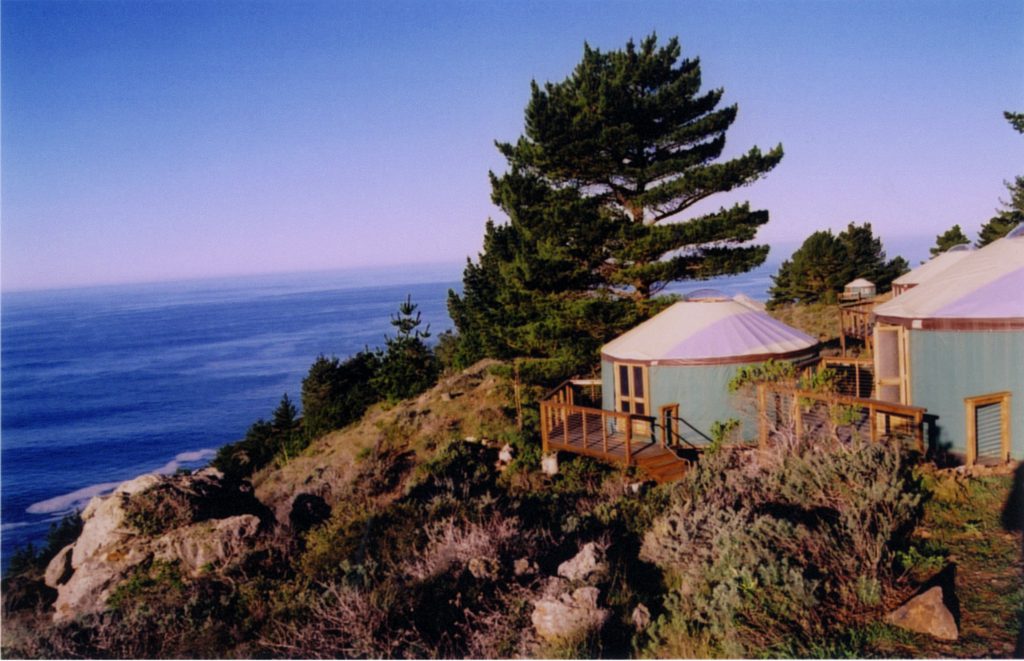
Strong Weather Isn’t the Danger You Think It Is
A common reservation about yurts from glamping operators is the idea that yurts are vulnerable to strong weather. While climate should, indeed, play a role in some of your decision-making around yurts – if you live in a hot and humid area, for instance, there are some logistics around securing sufficient power for air conditioning – weather doesn’t pose the danger you might think it does.
As John says: “We’ve had heavy rain and hurricane-force winds up to 80 miles per hour. It’s the nature of being right on the Pacific coast. Our yurts hold up just fine. The top cable keeps everything together really well, and the yurt just sheds the wind, even when the weather is as crazy as you can imagine.”
Questions About Yurts? Get in Touch.
Yurts Are Good for Business…
John and Corrine have witnessed the rise of glamping firsthand. During their years operating Treebones, they’ve noticed a shift in customer enthusiasm from tent camping to accommodations, like yurts, that have more amenities but can still offer the rustic experience that draws people to the outdoors.
This has shown up in the company’s bottom line. “We typically see about 90% occupancy for our yurts, compared to around 50% for tents,” John says. “I don’t think tent camping will ever really disappear as a pastime, but these days, more and more people are looking for yurts.”
In terms of how this translates to a return on investment for yurt operators, John says: “Yurts are pretty affordable to buy, and we’ve found that they cater to guests who are relatively comfortable financially. There are some up-front infrastructure costs to think about, like water and sewer. But once you break even on that, you can add more yurts and start generating a profit pretty quickly.”
…Because They Cater to Today’s Traveler
Treebones’ yurts are especially popular among an increasingly common guest demographic: people looking for exciting yet comfortable variations on the camping experience. “I would describe our typical guests as experience-seeking young people,” John says. “We’re seeing them arrive more and more.” While yurts may still be a bit obscure to some, John has seen firsthand that, once people understand what staying in a yurt entails, they see it as a fresh, unique experience that they’re curious to try for themselves.
As an example, John offers an anecdote from some years back, when a Los Angeles Times reporter visited Treebones, stayed in a yurt, took some pictures, and published them in the paper. The article was picked up around the world, including as far away as Saudi Arabia. “Most importantly, the reporter’s pictures were picked up by local papers in New York, right as the city was in the middle of an ice storm,” John says. “Just getting a visual of these yurts bathed in sun in Big Sur seemed to awaken something in people. Almost immediately, our hotel was full of folks who had traveled across the country from New York.”
Since Treebones first opened, the resort has consistently been among Trip Advisor’s top destinations in Big Sur. Given their exceptional ability to cater to the desires of today’s travelers, this comes as no surprise.
Yurts Have a Low Environmental Impact
Another typical guest profile for Treebones: the environmentally conscious traveler. “People who stay in our yurts are often consciously looking to avoid staying somewhere that has a big carbon footprint or is extractive,” John explains.
Why are these folks attracted to yurts? “When I say yurts enable us to perch lightly on the land, I’m alluding to two things in particular,” John says. “First, we don’t need to clear a bunch of land to build our yurts. We don’t have to pave over any earth or animal habitats. Second, yurts use far fewer materials than a cabin – less wood, less drywall. We always think about how much we’re tapping the planet’s resources with the materials we use, and yurts allow us to keep that level pretty low. A 20-foot yurt, packed up, can fit in the back of your pickup truck.”
Curious what a yurt might look like at your campground or resort? Start finding out by designing your own yurt in our Yurt Builder.
